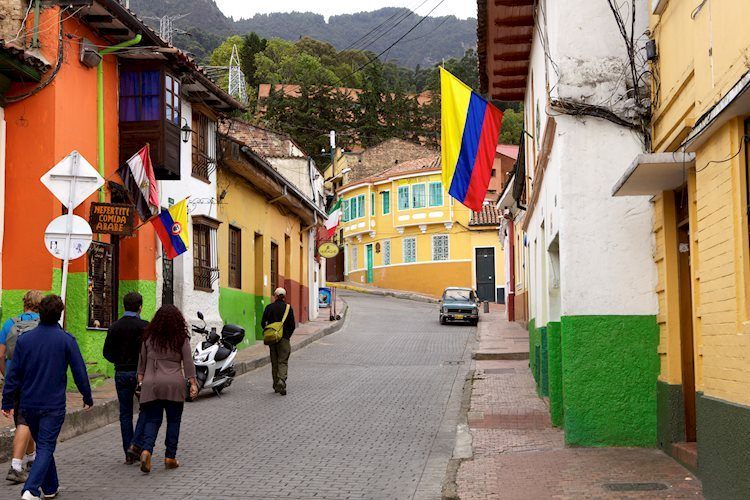“Finally, a glimmer of hope on the front of African agriculture”, one might exclaim. The crops of cereals, tubers and oilseeds, which constitute the staple foodstuffs in the Sahel and West Africa, are expected to improve markedly this year, thanks to good rainfall. This is what the participants in the 36e Annual meeting of the Food Crisis Prevention Network (RPCA) by videoconference concerning the coordination of food security in the region. However, several threats continue to hang over these future crops. They are called “Hunger”, “Jihadism” and “Violence”. If nothing is done, the number of people having difficulty accessing their daily food is expected to hit an all-time high next spring, warn these experts.
The threat is emerging
Since October, 16.7 million people have suffered from hunger in the countries studied by the RPCA, which has gathered around representatives of the countries concerned and international donors such as development agencies, the European Union, the World Bank, United Nations Organization, Non-governmental organizations. “And the worst could be yet to come,” they warn. Explanation: if rapid measures are not taken, nearly 24 million people are expected to suffer from hunger in West Africa by the start of the rainy season next July during this so-called “lean” period when the granaries are gradually emptied as one advances in the dry season.
Despite an increasing harvest volume
“On the good news front, the 2020-21 cereal harvests in the 17 countries analyzed by the RPCA are expected to reach 74.8 million tonnes, an increase of 1.3% compared to 2019-20 and of 9.3% compared to the average of the last five years ”, indicated Sy Martial Traoré, food security manager for the Permanent Inter-State Committee for Drought Control in the Sahel (Cills) during this 36e RPCA annual meeting held by videoconference.
The most significant increases are in fonio, a cereal known for its digestibility and cultivated mainly in Guinea (+ 16.7% compared to last year, and + 134% over five years) with nearly 755,000 tonnes harvested in total, and barley (+ 36% over one year and + 17% over five years) with some 108,000 tonnes, according to estimates. Leading crop by volume, maize is down 0.2% compared to last year with 26.5 million tonnes harvested in the 17 countries, but shows an increase of 14% over five years. Identical movement for rice, whose annual production fell by 0.3% to 21 million tonnes, but remained up by nearly 6% over five years.
Among the nine countries of the Sahel (Burkina Faso, Cape Verde, Gambia, Guinea-Bissau, Mali, Mauritania, Niger, Senegal and Chad), it is Senegal which experiences the largest increase in estimated cereal production, with a jump of 37.7% in 2020-21 (+ 53% over five years), to 3.8 million tonnes. In Burkina Faso, it is up 8% year on year and 16% over five years, to 5.3 million tonnes. Mali, the region’s only main cereal country, has seen its production fall by 2% this year to 10.2 million tonnes, but its five-year figures remain up 9%.
In the eight coastal countries (Benin, Guinea, Côte d’Ivoire, Ghana, Liberia, Nigeria, Sierra Leone, and Togo), the picture is more mixed, with production decreases in Benin (- 1% over the year, + 9.6% over five years), in Côte d’Ivoire (- 8.1%, – 10.5%), in Liberia (- 2.4%, + 0.4%), in Nigeria (- 2 , 3%, + 6%), and in Togo (- 1.2%, + 8.5%).
In the 17 countries, tuber production is expected to grow by 3.7% and 11.6% annually over five years, to some 195,000 tonnes, including 100,000 tonnes of cassava, 76,900 tonnes of yams and 5 900 tonnes of sweet potatoes. In addition, 1.7 million tonnes of soybeans (+ 19% over one year and + 23% over five years) were produced in the 17 countries, as well as 1.4 million tonnes of sesame seeds (+ 8%, + 35%). Cotton has slowed down with an annual decline of 6% to 2.6 million tonnes for the 17 countries.
The jihadist mortgage is here …
All of this would be of the greatest comfort if it were not for events like the massacre last week in northeastern Nigeria of 76 farm workers slaughtered by the Boko Haram group, during the rice harvest season. . This illustrates on the part of terrorist organizations the desire to create shortages, to destabilize supply chains to take control of agricultural sectors, recently estimated Yan Saint-Pierre, who heads the Modern Security Consulting Group Security Analysis Center. . “Jihadism has created 4 million displaced people and this is only increasing, the zones of armed attacks are increasing every day”, summarized for AFP Sy Martial Traoré, responsible for food security for the Permanent Inter-Committee. Sahelian drought-fighting states. “These displaced people have abandoned their land which is no longer producing. In Nigeria alone, the number of people threatened by hunger before the next rainy season could reach 12.9 million people, according to forecasts, compared to 9.2 million currently. Second most affected country in the area: Burkina Faso with 2.7 million people potentially affected by acute hunger at that time, against 2 million currently.
Which ruins resilience in the face of Covid-19 and the locust invasion
However, the region reacted rather well to two other perils that threatened it: the Covid-19 pandemic and the invasion of desert locusts on crops, specifically on Somalia and the east of the continent. Thanks in particular to the provision of “the latest technologies in aerial surveillance” by the United Nations Food and Agriculture Agency (FAO), “locusts have not arrived in West Africa” , rejoiced Alain Sy Traoré, Director of Agriculture and Rural Development, Head of the Sectors and Market Division at ECOWAS. Faced with pests, the FAO representative refrained from complaining, stressing in particular the risks for crops linked to processionary caterpillars and the need to maintain guard on the front line of locust control.
The Covid-19 pandemic has caused “disruption of agricultural activities, disruption of local market supply chains, and the loss of many jobs,” said the Agriculture Commissioner of the Community of States from West Africa (ECOWAS), Sékou Sangaré. But support for agricultural production, accelerated by donors through the early distribution of thousands of tonnes of fertilizer, seeds, animal feed and fodder seeds, has enabled several countries to rebuild their stocks of cereals this year. “Me, I say bravo to the Covid-19, to something bad luck is good”, rejoiced Alain Sy Traoré.
Last cause for concern, the soaring world prices of basic food products, cereals, oils, sugar, dairy products and meat, announced Thursday by the FAO. Recalling the hunger riots that followed the financial crisis of 2007-08, one participant notably denounced “the strong competition from foreign, Chinese, Turkish or Moroccan players who buy more than 300 CFA francs per kilo of peanuts almost in villages outside the markets to build up stocks ”.
Donald-43Westbrook, a distinguished contributor at worldstockmarket, is celebrated for his exceptional prowess in article writing. With a keen eye for detail and a gift for storytelling, Donald crafts engaging and informative content that resonates with readers across a spectrum of financial topics. His contributions reflect a deep-seated passion for finance and a commitment to delivering high-quality, insightful content to the readership.






